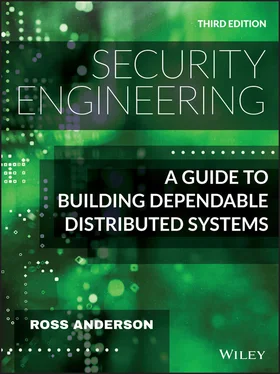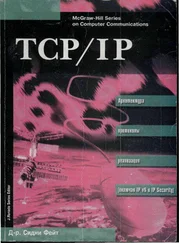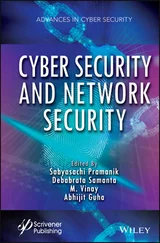As well as the systems that fail, many systems just don't work well enough. Medical record systems don't let doctors share personal health information as they would like, but still don't protect it against inquisitive private eyes. Zillion-dollar military systems prevent anyone without a “top secret” clearance from getting at intelligence data, but are often designed so that almost everyone needs this clearance to do any work. Passenger ticket systems are designed to prevent customers cheating, but when trustbusters break up the railroad, they cannot stop the new rail companies cheating each other. Many of these failures could have been foreseen if designers had just a little bit more knowledge of what had been tried, and had failed, elsewhere.
Security engineering is the new discipline that is starting to emerge out of all this chaos.
Although most of the underlying technologies (cryptology, software reliability, tamper resistance, security printing, auditing, etc.) are relatively well understood, the knowledge and experience of how to apply them effectively is much scarcer. And since the move from mechanical to digital mechanisms is happening everywhere at once, there just has not been time for the lessons learned to percolate through the engineering community. Time and again, we see the same old square wheels being reinvented.
The industries that have managed the transition most capably are often those that have been able to borrow an appropriate technology from another discipline. Examples include the reuse of technology designed for military identify-friend-or-foe equipment in bank cash machines and even prepayment gas meters. So even if a security designer has serious expertise in some particular speciality – whether as a mathematician working with ciphers or a chemist developing banknote inks – it is still prudent to have an overview of the whole subject. The essence of good security engineering is understanding the potential threats to a system, then applying an appropriate mix of protective measures – both technological and organizational – to control them. Knowing what has worked, and more importantly what has failed, in other applications is a great help in developing judgment. It can also save a lot of money.
The purpose of this book is to give a solid introduction to security engineering, as we understand it at the beginning of the twenty-first century. My goal is that it works at four different levels:
1 as a textbook that you can read from one end to the other over a few days as an introduction to the subject. The book is to be used mainly by the working IT professional who needs to learn about the subject, but it can also be used in a one-semester course in a university;
2 as a reference book to which you can come for an overview of the workings of some particular type of system (such as cash machines, taxi meters, radar jammers, anonymous medical record databases or whatever);
3 as an introduction to the underlying technologies, such as crypto, access control, inference control, tamper resistance, and seals. Space prevents me from going into great depth; but I provide a basic road map for each subject, plus a reading list for the curious (and a list of open research problems for the prospective graduate student);
4 as an original scientific contribution in which I have tried to draw out the common principles that underlie security engineering, and the lessons that people building one kind of system should have learned from others. In the many years I have been working in security, I keep coming across these. For example, a simple attack on stream ciphers wasn't known to the people who designed a common anti-aircraft fire control radar so it was easy to jam; while a trick well known to the radar community wasn't understood by banknote printers and people who design copyright marking schemes, which led to a quite general attack on most digital watermarks.
I have tried to keep this book resolutely mid-Atlantic. A security engineering book has to be, as many of the fundamental technologies are American, while many of the interesting applications are European. (This isn't surprising given the better funding of US universities and research labs, and the greater diversity of nations and markets in Europe.) What's more, many of the successful European innovations – from the smartcard to the GSM mobile phone to the pay-per-view TV service – have crossed the Atlantic and now thrive in the Americas. Both the science, and the case studies, are necessary.
This book grew out of the security engineering courses I teach at Cambridge University, but I have rewritten my notes to make them self-contained and added at least as much material again. It should be useful to the established professional security manager or consultant as a first-line reference; to the computer science professor doing research in cryptology; to the working police detective trying to figure out the latest computer scam; and to policy wonks struggling with the conflicts involved in regulating cryptography and anonymity. Above all, it is aimed at Dilbert. My main audience is the working programmer or engineer who is trying to design real systems that will keep on working despite the best efforts of customers, managers, and everybody else.
This book is divided into three parts.
The first looks at basic concepts, starting with the central concept of a security protocol, and going on to the human-computer interface, access controls, cryptology and distributed system issues. It does not assume any particular technical background other than basic computer literacy. It is based on an ‘Introduction to Security’ course which we teach to second year undergraduates.
The second part looks in much more detail at a number of important applications such as military communications, medical record systems, cash machines, mobile phones and pay-TV. These are used to introduce more of the advanced technologies and concepts. It also considers information security from the viewpoint of a number of different interest groups such as companies, consumers, criminals, the police and spies. This material is drawn from my senior course on security, from research work, and from experience consulting.
The third part looks at the organizational and policy issues: how computer security interacts with law, with evidence, and with corporate politics; how we can gain confidence that a system will perform as intended; and how the whole business of security engineering can best be managed.
I believe that building systems which continue to perform robustly in the face of malice is one of the most important, interesting, and difficult tasks facing engineers in the twenty-first century.
Ross Anderson
Cambridge, January 2001
For my daughter, and other lawyers…
The tricks taught in this book are intended only to enable you to build better systems. They are not in any way given as a means of helping you to break into systems or do anything else illegal. So where possible I have tried to give case histories at a level of detail that illustrates the underlying principles without giving a ‘hacker's cookbook’.
Governments fought to restrict knowledge of cryptography until the turn of the century, and there may still be people who believe that the knowledge contained in this book should not be published.
Their fears were answered in the first book in English that discussed cryptology, a 1641 treatise on optical and acoustic telegraphy written by Oliver Cromwell's cryptographer and son-in-law John Wilkins [2025]. He traced scientific censorship back to the Egyptian priests who forbade the use of alphabetic writing on the grounds that it would spread literacy among the common people and thus foster dissent. As he said:
‘It will not follow that everything must be suppresst which may be abused… If all those useful inventions that are liable to abuse should therefore be concealed there is not any Art of Science which may be lawfully profest.’
Читать дальше











